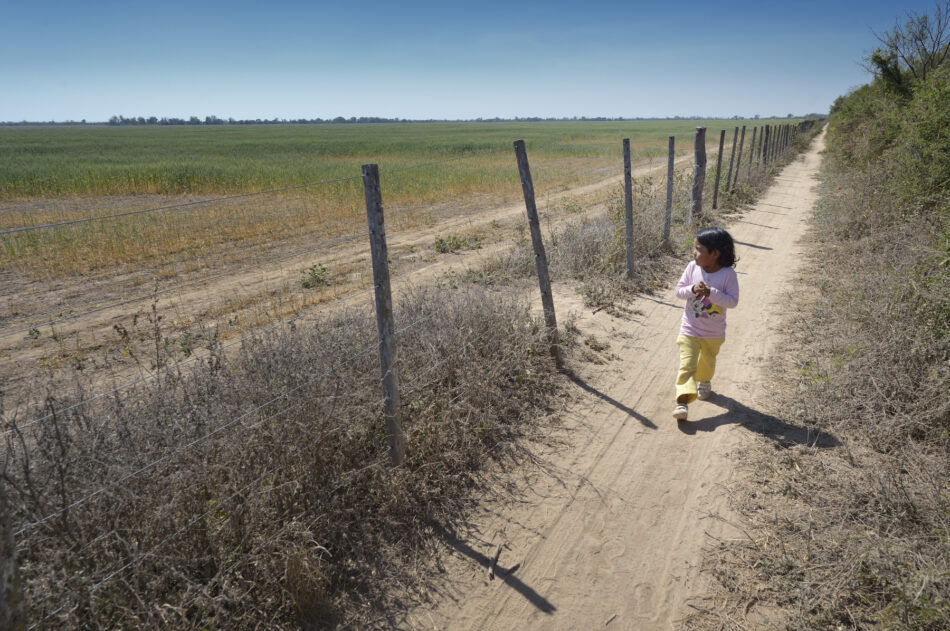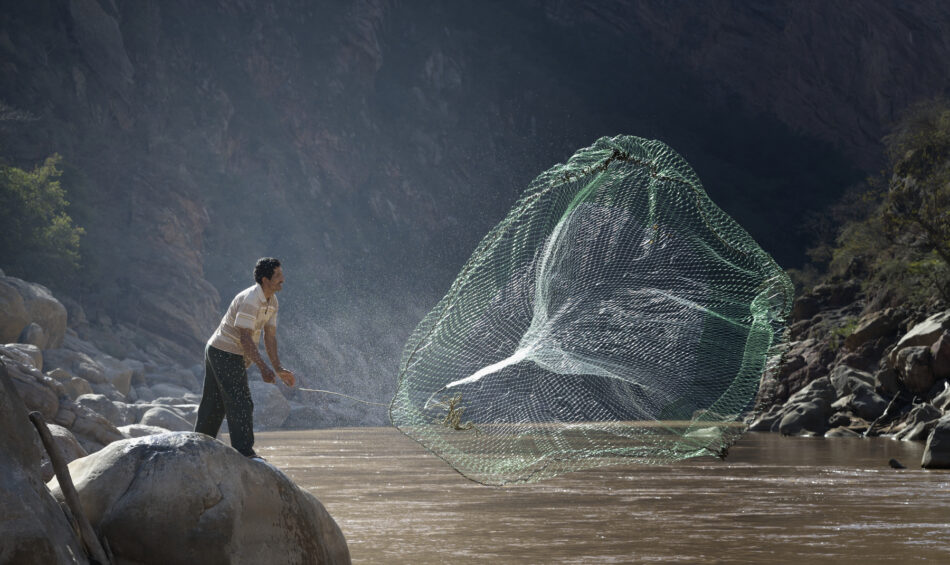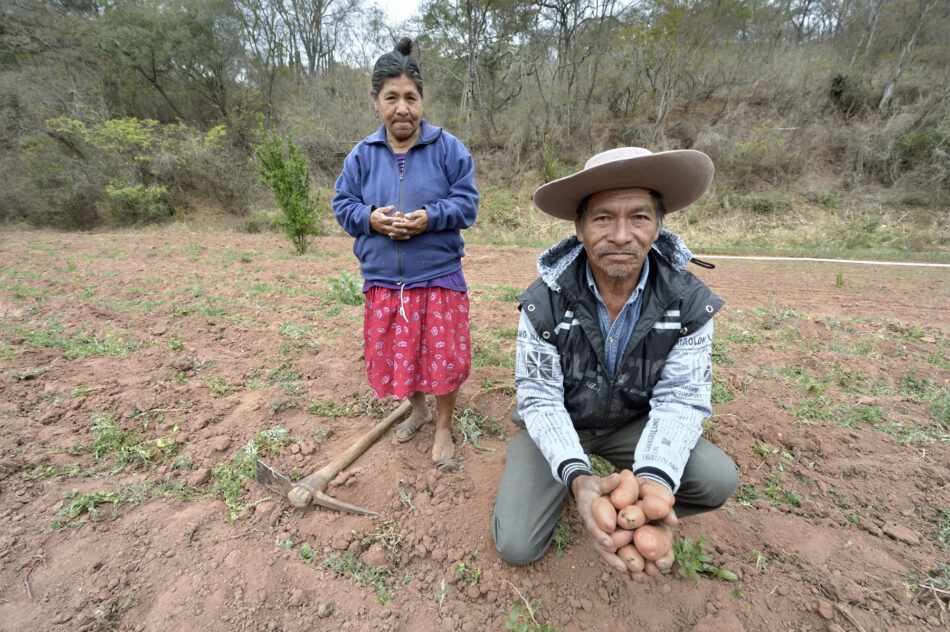Global Lens Reflections on life, the universe, and everything
Fighting for the Chaco
Indigenous and women lead the battle to defend endangered South American forest
By Paul Jeffrey
Published in response magazine in May 2015
The Chaco is under assault. With growing international worry about deforestation in the larger Amazon basin to the north, foreign corporations seeking land to feed China’s hunger for soybeans and the world’s thirst for oil and gas have invaded the Chaco, a vast and biologically diverse expanse of grasslands and dry forest that spreads across parts of Argentina, Bolivia and Paraguay. Yet people who have long called the Chaco their home are fighting back, with indigenous communities and women leading the way.
“The buzzards are circling, wanting to seize the land from those to whom it belongs,” said Father Jose Auletta, a Catholic priest who works in the Argentinian Chaco.
“The buzzards are arriving with their agricultural projects, and they’re taking over thousands of hectares of indigenous land. They have a piece of paper granting them title, so they say they can do what they want. They’re doing away with the trees in the last part of Argentina that still has forest. They’re destroying the lungs of Argentina’s north,” he said.

Father Auletta says anyone who stands up to the corporate intruders is labeled a subversive.
“A poor person who stands up for their land and their rights, instead of being protected by the law, is criminalized, is declared guilty without a legal process. Those who stand up with firmness for their rights are considered ‘invaders,’ but they are invaders of their own land,” he said.
Oscar Villalba is a Mocovi indigenous activist in El Tabacal, Argentina, where residents have struggled for land for decades. He’s been arrested several times for occupying land to which others claim legal title.
“We’re not asking the government to give us land, we’re asking for the return of our own land, the land which belonged to our grandparents but which the government stole from them,” he said.
“The white people can have all the pieces of paper they want, but that doesn’t give them the right to our land. We’ve been here since the beginning, but today they call us invaders. It’s our land. And if we can’t possess it, we’ll disappear. Our young will emigrate and we’ll die as a people,” Mr. Villalba said.

Since Argentina emerged from dictatorship in the 1980s, activists have pushed hard for a variety of legal measures to guarantee indigenous land rights, but Father Auletta says they have battled a public perception that the indigenous in Argentina had all died off.
“We’ve been told for a long time that there were no indigenous in Argentina, and so we had to discover them anew. We’ve discovered them among the poor, or, more exactly, among those who have been made poor by the rich. As a church we’ve moved from protecting them to accompanying them, an important step for us because it means developing a respect for both their culture and their spirituality,” said Father Auletta.
Dividing the land
Accompaniment by faith groups can contribute to change. That’s what happened with the recent resolution of a huge land dispute in Santa Victoria Este, where three decades of conflict between indigenous communities and lighter-skinned cattle ranchers often turned violent.
Known locally as criollos, the ranchers were pushed to the region by a central government wanting to better populate its border region with Paraguay and Bolivia. The ranchers often displaced Wichi, Toba, Tapiete, Chulupi and Chorote indigenous families, many of whom are traditional hunter-gatherers. As the criollos’ cattle roamed the landscape, they ate wild foods on which the indigenous had long survived. As sharing the land become increasingly difficult, violence increased.

The conflict ended last year when the provincial government agreed to a deal dividing the land. The indigenous got 400,000 hectares of land and the criollos 243,000 hectares. Although some final details remain to be ironed out, many ranchers are moving their animals and barbed wire off of land that will return to indigenous control.
The deal was brokered with accompaniment from several church organizations. The indigenous had help from an Anglican organization, and the ranchers from Fundapaz, a group founded by Catholics and supported by Church World Service. The church groups provided legal advice, logistical support, and pastoral accompaniment, even though their staff had to occasionally leave the region for their own safety as sporadic violence broke out.
The final deal came after the Interamerican Commission on Human Rights threatened to take the Argentinian government to court for failure to honor its obligations to indigenous groups.
According to Juan Luis Diaz, the executive director of Fundapaz, the agreement is a victory for both groups.
“Both sides are poor, and there are more things that unite them than divide them. Only by overcoming their differences and working together did they discover that their individual struggles for justice became easier,” he said.
The church groups had to step in and work with the two groups because the government failed to do so. Indeed, according to Mr. Diaz, “The government’s strategy for many years was to generate conflicts so that the two sides would fight each other. That slowed down considerably the search for a just solution.”

Rogelio Segundo is an indigenous leader in Santa Victoria Este, and he says the church accompaniment helped bring people to the negotiating table who otherwise had no interest in talking to each other.
“In the old days we wouldn’t even talk to each other, we’d just fight. And not everyone agrees with the settlement. There are some criollos who say they’ll only leave their land if they’re dead. That’s just fine with some of the indigenous. So there’s still work to be done,” he said.
“We women are in charge here”
Many indigenous communities in the Chaco are matrilineal. So when a couple marries, for example, the man goes to live with the woman’s family. Yet decision-making power in the home has seldom translated into political power outside, where indigenous men–more likely to speak Spanish, the dominant language–will often control transactions in the marketplace. Even if they run things in the house, it nonetheless takes real courage for women at the margins to speak up in political debate. Yet of courage there is no shortage.
“It’s we women who are struggling to change things, and because our men are busy working we have to take leadership. So when we have confrontations with the politicians, whether in their offices or in the streets when we protest, it’s we women who are at the front. And it’s gotten to the point where they’re afraid of us. When some provincial officials came to our community recently to respond to our protests about lack of schools, we had to chase after them. They tried to hide from us. They told people they were afraid to face the women of this community,” said Nelida Alpiri, leader of a women’s group in El Bananal, a dusty Guarani village in Argentina.

Argentina has a legacy of strong women political figures–think Eva Peron–and the election of President Cristina Fernandez de Kirchner in 2007 encouraged women to take leadership at all levels.
“We women are in charge here. If we’ve got a woman as president, then we women have the right to rule everywhere in the country,” said Sonia Jimenez, another member of the El Bananal women’s group.
Yet Noemi Ortega, also a member of the group, sounds a note of caution. “The problem will come when we someday elect a man as president. We won’t ever be able to serve dinner late again,” she said.
In response to a question about domestic violence in the village, Ms. Jimenez said, “We don’t hit our men. If they misbehave, we just throw them out of the house.”
Asked if the men ever hit the women, Ms. Ortega responded, “Why would they do that? If my husband hit me I’d never let him back in the house. And our lot was given to me by my mother, so he’d just be out of luck.”
The real value of labor
One of the issues faced by indigenous women in the Chaco is that their work isn’t always valued correctly. Alba Rostan is working to change that.
Ms. Rostan is a founder of the United Mission Board, which was started in the Chaco by Argentinian Methodists and Disciples of Christ in the 1960s. Today she accompanies several indigenous communities around Juan Jose Castelli, a town in the Argentinian Chaco. In addition to supporting the communities’ efforts to recover their land, Ms. Rostan is working to help women value appropriately the work they do in crafting traditional jewelry and baskets which they sell to support their families.

With training in business administration, Ms. Rostan says the women artisans have to live with the rules of the market. “That means we have to put a real cost on a basket that they make. So I ask them. ‘What does a palm frond cost you?’ They have no idea. ‘How many hours did it take you to weave this?’ They have no idea. ‘How much time did it take you to find the material for this button in the forest?’ They have no idea. So we get out paper and pencils and we calculate and draw diagrams and they end up being surprised at how much goes into producing something like a basket. We draw up the whole process. When they learn the real cost of what they’ve created, they’re shocked, because all their lives they’ve given away their labor to people who have ten thousand times what they have,” Ms. Rostan said.
“It’s a kind of slavery of the mind. So we talk about self-esteem and gender, and they come to accept that their time is worth as much as anyone else’s time. And in pricing something we have to take into consideration that some natural resources are getting harder to find, and that has an effect on the price. We finally come up with a real price, but they often think that simply because they’re indigenous women, and often illiterate, they don’t have a right to charge that,” she said.
In a quest to break out of the church and solidarity market ghettoes and find other, more lucrative markets for the women’s products, Ms. Rostan has brought some design students from Buenos Aires, the nation’s capital, to the remote town. It’s a shock, she says, for the young urban women to be exposed to poverty they didn’t know existed in their country. But they have quickly developed a creative partnership with the indigenous women, tweaking some original designs in small ways that make them appeal to a larger group of buyers.

Ms. Rostan acknowledges there’s tension at times between keeping the designs authentic and making them sellable.
“Some anthropologists may argue with me, but at the end of the day the women need to figure out how to get food into their house. If they don’t have bread on their table, what does the argument of anthropologists matter? It’s very easy for anthropologists to say what they want when they’re sitting there with their coffee and air conditioning. For them to insist that others continue living purely as indigenous in the forest with their traditional customs, that’s all well and good. But they should go live like them and then tell me if things need to change or not. We want to preserve identity at the same time we adjust to the market of today. That’s what will help them live. If we don’t figure out how to do this, there won’t be any identity for the anthropologists to study, because people will have moved to the city or stayed home and died of starvation,” she said.
New role for youth
Basket styles aren’t the only thing that’s changing in the Chaco. In the village of Mberirenda, Bolivia, Catarin Seron has participated in some workshops on leadership for young people sponsored by Church World Service, and the 24-year old Guarani woman is not wasting time putting what she has learned into practice. She’s leading her village in a fight for land they believe is rightfully theirs, but which was “bought” decades ago and converted into a plantation. Ms. Seron’s struggle isn’t just with outside usurpers, however. It’s also a battle with other generations within her own community.

“This land was taken from our grandparents. We want it back for a place to live and for our children to grow up. The little piece of land we have left is a misery compared to what the rich owners have amassed with the labor of our grandparents,” she said.
“I want to occupy the land but the old people are afraid. Most of them work for the old patron and they’re still scared of him. They’re afraid they’ll lose their jobs, and there are no other jobs around here. It’s a trick, a deception,” Ms. Seron said. “The owners claim our grandparents signed the land over to them, but how could they do that if they couldn’t read or write? We young people are raising these questions.”
This new protagonism of young people is matched by the increasingly public role of women.
“We women were once timid, but now we participate more and we’re now in spaces where before there were only men. In this village the first and second capitanes [community leaders] are both women,” she said. “Before it was very machista, but things are better now as both men and women participate in decision making. My mother didn’t go to meetings before, but now she does and now she’s a community leader.”
Ms. Seron says part of what drives her and other young people to get involved in community life is the realization that their culture was slipping away from them. That frightens her.
“My grandparents encouraged me to speak only Spanish. It was a way to protect me from the discrimination that they had experienced as indigenous people,” she said. “So many of my generation have lost a lot of our language and culture. We want to recover it. We want to say we are Guarani, and do so proudly.”
The Rev. Paul Jeffrey is senior correspondent for response.
